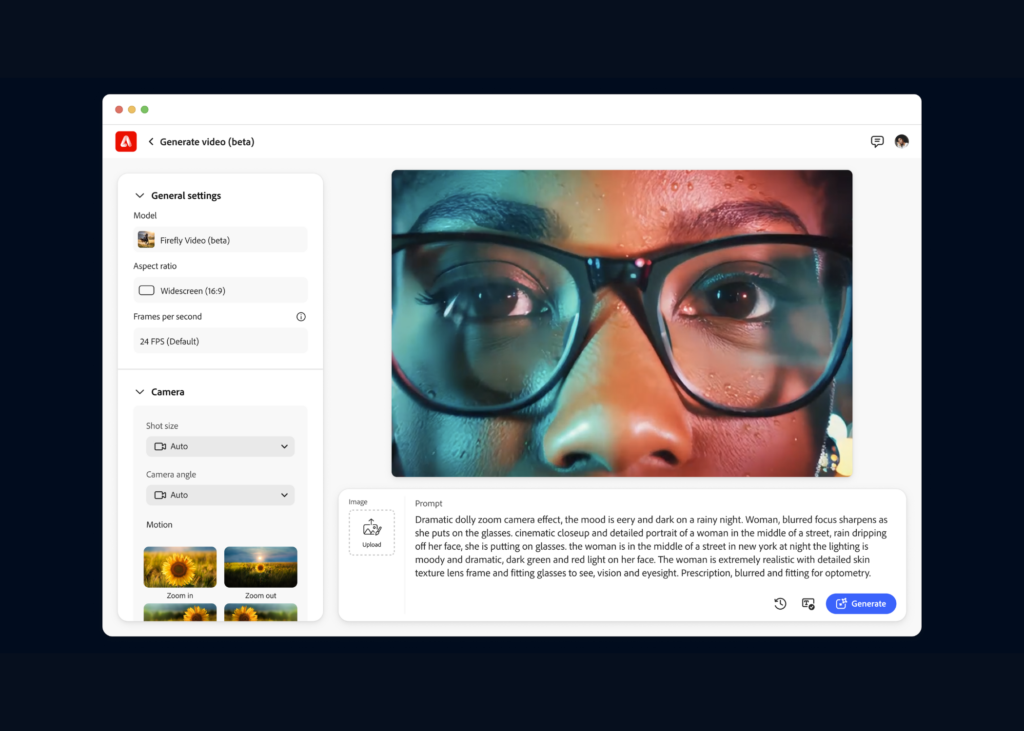Imagine transforming a gloomy, overcast scene into a sun-drenched paradise with a simple text command. Or removing an unwanted photobomber from your perfect vacation video without any complicated editing techniques. These are just a few of the possibilities Adobe is promising with its upcoming Firefly Video Model, a groundbreaking generative AI tool set to revolutionize the video editing landscape.
Firefly: The Magic Wand for Video Editors
Adobe’s Firefly is not just another video editing tool; it’s more like a magic wand that empowers creators to manipulate videos with unprecedented ease and flexibility. Using simple text prompts, users will be able to make significant changes to their videos, such as altering the weather, adding or removing objects, and even changing the overall style or mood of a scene.
“This is a game-changer,” says Sarah Johnson, a freelance video editor. “Firefly has the potential to democratize video editing, making it accessible to anyone with a creative vision, regardless of their technical skills.”
Think of a wedding video where the weather took an unexpected turn for the worse. With Firefly, the editor could easily replace the gray skies with a bright blue backdrop, ensuring the video captures the joyous spirit of the occasion. Or consider a nature documentary where an elusive animal makes a brief appearance. Firefly could be used to enhance the visibility of the creature, making it easier for viewers to appreciate its beauty.
All generations shown below were created with Adobe’s Firefly Video Model and were generated in under 2 minutes.
Must read: Adobe Unveils Revolutionary Generative AI Features in Photoshop and Illustrator
Redefining the Video Editing Landscape
The implications of Firefly extend far beyond individual creators. The technology could significantly impact the film and television industry, enabling faster and more cost-effective post-production workflows. It could also open up new avenues for creative expression, allowing filmmakers to realize their visions in ways that were previously impossible.
“Firefly could be the catalyst for a new wave of cinematic innovation,” predicts David Lee, a film director. “The ability to manipulate videos so effortlessly will undoubtedly inspire filmmakers to push the boundaries of storytelling.”
However, like any powerful technology, Firefly also raises certain concerns. The ease with which videos can be manipulated could lead to an increase in misinformation and deepfakes. It’s essential for Adobe to implement safeguards to ensure the responsible use of this technology.
“The potential for misuse is a real concern,” acknowledges Maria Garcia, a media ethics expert. “It’s crucial for Adobe to educate users about the ethical implications of Firefly and to develop tools to detect manipulated videos.”
The Future of Video Editing
Despite these concerns, the potential benefits of Firefly are undeniable. By making video editing more accessible and intuitive, it could unleash a wave of creativity, empowering individuals and businesses to tell their stories in more compelling and engaging ways.
“Firefly is a glimpse into the future of video editing,” says Emily Chen, a technology analyst. “It represents a significant step towards a world where anyone can create professional-quality videos with ease.”
As Adobe continues to develop and refine Firefly, it’s clear that the future of video editing is bright. This innovative technology has the potential to transform the way we create and consume video content, ushering in a new era of AI-powered creativity.
Conclusion
Adobe Firefly Video Model is poised to disrupt the video editing industry, offering unprecedented capabilities for manipulating videos with text prompts. While concerns about misuse persist, the potential benefits for creativity and accessibility are immense. As we eagerly await its release, it’s clear that Firefly represents a major leap forward in the evolution of video editing, illuminating a path towards a more democratized and innovative future.



